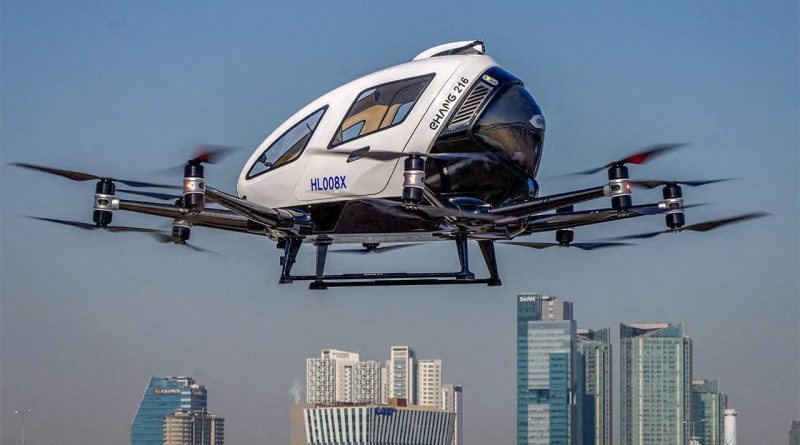China Approves Flying Taxis, Paving the Way for Autonomous Passenger Drones
Beijing — China has taken a significant step toward developing a commercial flying taxi industry, as regulators granted the country’s first-ever approvals for two companies to operate autonomous passenger drones.
Nasdaq-listed EHang Holdings and Hefei Hey Airlines received air operator certificates from the Civil Aviation Administration of China (CAAC) on Saturday, according to state-run news agency Xinhua. This milestone clears both companies to use unmanned aerial vehicles for commercial passenger services, including urban sightseeing tours.
The air operator certificate was the final regulatory requirement before the passenger drones could officially enter service, following approvals for type certification, production certification, and airworthiness certification, according to a report by Citic Securities.
“We reckon that low-altitude tourism will be the beginning of this new business,” the report stated. “EHang’s urban sightseeing tours can accelerate the development of the industry.”
China has been actively promoting the development of the low-altitude economy, which encompasses a range of aerial technologies, from delivery drones to flying cars. Recognizing its potential, Chinese leaders have identified this sector as a key driver of economic growth. In early March, Premier Li Qiang included the low-altitude economy among crucial emerging industries such as biomanufacturing, quantum computing, embodied artificial intelligence, and 6G mobile networks during his speech to the National People’s Congress.
“The low-altitude economy is a new growth driver, and it will be an important engine to push the high-speed development of China’s economy,” said Cheng Bolin, vice-president of the low-altitude unit at the China Information Association, during an industry conference on March 28.
According to a report by research group Hurun, citing CAAC data, China’s low-altitude economy is expected to be worth 1.5 trillion yuan (US$207 billion) by 2025 and could grow to 2.5 trillion yuan by 2035.
Key players in the Chinese market include startups like EHang and Feihang Aviation, as well as established car manufacturers such as Xpeng and Geely. They face competition from global multinationals like Boeing, Airbus, and Brazilian firm Embraer.
“Looking ahead, as policies supporting the low-altitude economy continue to roll out, competition in this sector is set to intensify,” Hurun stated in its report.
The Future of Flying Taxis
The approval of flying taxis marks a major milestone in China’s efforts to revolutionize urban mobility. With rapid advancements in autonomous technology and strong governmental support, China aims to create a sustainable and efficient transportation network in the sky.
Experts predict that in addition to tourism, flying taxis could soon be used for emergency medical services, business travel, and even daily commutes. The integration of smart traffic control systems and dedicated air corridors could further accelerate the adoption of urban air mobility solutions.
With China’s regulatory green light, the future of urban air mobility is one step closer to becoming a reality, positioning the country at the forefront of the global autonomous aerial transportation industry.



